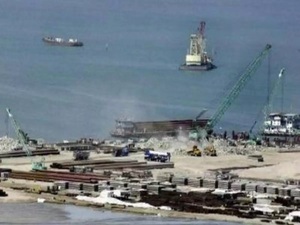Dipanjan Roy Chaudhury

The progress on CPEC has reportedly slowed down due to the economic downturn, restrictions by the IMF’s bail-out programme on fresh borrowings, outbreak of the Covid-19 pandemic. Beijing also appears hesitant to take up new projects due to bureaucratic inertia and security concerns.
AgenciesAs many as 92% of Balochistan districts are classified as high deprived. Even the gas-rich Dera Bugti district has the lowest HDI in Pak. Balochistan has the lowest literacy rate (43%), including the least net enrolment rate for primary schools.
Situation in Balochistan, Pakistan’s biggest province, could emerge as Achilles' Heel for China’s mega BRI and its jewel in the crown CPEC.
The progress on CPEC has reportedly slowed down due to the economic downturn, restrictions by the IMF’s bail-out programme on fresh borrowings, outbreak of the Covid-19 pandemic. Beijing also appears hesitant to take up new projects due to bureaucratic inertia and security concerns.
Chinese authorities remain concerned over increasing Baloch Liberation Army (BLA) activities and possible revival of the Sindh Revolution Army. Besides risk of Covid-19 infection among security personnel deployed for CPEC security and slow pace of progress on Gwadar Safe City project are the other challenges. There is lack of progress on cross regional cooperation mechanism between Xinjiang and Gilgit-Baltistan following Pak’s failure to nominate its representative despite China appointing its representative in 2018.
Recently Pakistani media reports also referred to fencing around Gwadar port. There are allegations that the fence is being erected to safeguard assets at the behest of China. “The master plan for Gwadar includes three special zones, known as the Gwadar Port Free Zone (2,280 acres), GIEDA Industrial Zone (3,000 acres) and EPZA export processing zone (1,000 acres). As part of the infrastructure development programme for these three zones, a series of projects are envisioned, including construction of roads, utilities, warehouses and security. In the project description, fencing is given as one of the elements of the security plan,” according to a report titled What’s up in Gwadar published in The Dawn on Thursday.
But notwithstanding mega plans Balochistan remains backward and alienated. According to the Pakistan Ministry of Petroleum & Natural Resources, Balochistan currently produces 17%, but consumes only 7% of total national gas supply. Out of 32 district headquarters of Balochistan, 13 towns have natural gas facilities.
The natural gas from Sui, Dera Bugti was piped out of province 50 years ago, but even today the peripheral and outlying areas of Sui town rely on wood fuel. Access to electricity in the province is 25%. The federal government had promised to transfer 20% shares in the Saindak Project to the province after 2012, but it has extended the lease agreement with the Chinese company even without consulting the provincial government.
There are apprehensions that Chinese would outnumber the natives in Balochistan. Real estate investors from Lahore, Karachi, Islamabad have started purchasing land in the region at exorbitant prices following the construction of the Gwadar port.
Balochistan covers almost 44% of Pakistan’s total landmass but its average road density is just 0.16 as compared to 0.32 of the national average. The province continues to face acute water scarcity with water shortage and recurrent water droughts threatening the region’s agriculture driven economy.
Balochistan is the least developed province in terms of Human Development Index (HDI), with the lowest HDI score of 0.421 as compared to Punjab’s 0.732, as mentioned in UNDP 2017 Report. According to official reports, 71% of Baloch people were living in multidimensional poverty as compared to 31% in Punjab. Balochistan’s unemployment rate was 33.40% as against 19.1% in Punjab.
As many as 92% of Balochistan districts are classified as high deprived. Even the gas-rich Dera Bugti district has the lowest HDI in Pak. Balochistan has the lowest literacy rate (43%), including the least net enrolment rate for primary schools.
Infant and maternal mortality rates in Balochistan are highest in South Asia and its people are routinely dying of preventable diseases like typhoid, cholera, hepatitis. Although Balochistan makes up 44% of Pak’s total landmass, it has only 20 members out of a total 342 in the Pak National Assembly. The overall share of Balochistan in CPEC is only 4.5% and if the Gwadar port, airport and Hubco projects are excluded then total provincial share is reduced to a meagre 01%.
No comments:
Post a Comment